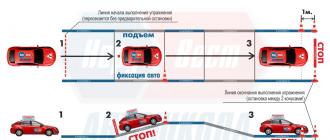If you are a scientist yourself or just an inquisitive person, and you often watch or read last news in the field of science or technology. It is for you that we have created such a section, which covers the latest world news in the field of new scientific discoveries, achievements, as well as in the field of technology. Only the latest events and only verified sources.
In our progressive times, science moves at a fast pace, so it is not always possible to keep up with them. Some old dogmas are crumbling, some new ones are being put forward. Humanity does not stand still and should not stand still, and the engine of humanity is scientists and scientific figures. And at any moment a discovery can occur that can not only amaze the minds of the entire population of the globe, but also radically change our lives.
Medicine plays a special role in science, since man, unfortunately, is not immortal, is fragile and very vulnerable to all kinds of diseases. Many people know that in the Middle Ages people lived on average 30 years, and now 60-80 years. That is, life expectancy has at least doubled. This was, of course, influenced by a combination of factors, but it was medicine that played a major role. And, for sure, 60-80 years is not the limit of an average life for a person. It is quite possible that someday people will step over the 100-year mark. Scientists from all over the world are fighting for this.
Developments are constantly underway in the field of other sciences. Every year, scientists from all over the world make small discoveries, little by little moving humanity forward and improving our lives. Places untouched by man are being explored, primarily, of course, on our home planet. However, work is constantly happening in space.
Among technology, robotics is especially rushing forward. The creation of an ideal intelligent robot is underway. Once upon a time, robots were an element of science fiction and nothing more. But already at the moment, some corporations have real robots on their staff that perform various functions and help optimize labor, save resources and perform hazardous activities for humans.
I would also like to pay special attention to electronic computers, which 50 years ago took up a huge amount of space, were slow and required a whole team of employees to maintain them. And now there is such a machine in almost every home, it is already called more simply and briefly - a computer. Now they are not only compact, but also many times faster than their predecessors, and anyone can understand it. With the advent of the computer, humanity opened a new era, which many call “technological” or “information”.
Remembering about the computer, we should not forget about the creation of the Internet. This also gave a huge result for humanity. This is an inexhaustible source of information, which is now available to almost every person. It connects people from different continents and transmits information at lightning speed, something that would have been impossible to even dream of 100 years ago.
In this section, you will certainly find something interesting, exciting and educational for yourself. Perhaps even someday you will be able to be one of the first to learn about a discovery that will not just change the world, but will change your mind.
If you are a scientist yourself or simply an inquisitive person, and you often watch or read the latest news in the field of science or technology. It is for you that we have created such a section, which covers the latest world news in the field of new scientific discoveries, achievements, as well as in the field of technology. Only the latest events and only verified sources.
In our progressive times, science moves at a fast pace, so it is not always possible to keep up with them. Some old dogmas are crumbling, some new ones are being put forward. Humanity does not stand still and should not stand still, and the engine of humanity is scientists and scientific figures. And at any moment a discovery can occur that can not only amaze the minds of the entire population of the globe, but also radically change our lives.
Medicine plays a special role in science, since man, unfortunately, is not immortal, is fragile and very vulnerable to all kinds of diseases. Many people know that in the Middle Ages people lived on average 30 years, and now 60-80 years. That is, life expectancy has at least doubled. This was, of course, influenced by a combination of factors, but it was medicine that played a major role. And, for sure, 60-80 years is not the limit of an average life for a person. It is quite possible that someday people will step over the 100-year mark. Scientists from all over the world are fighting for this.
Developments are constantly underway in the field of other sciences. Every year, scientists from all over the world make small discoveries, little by little moving humanity forward and improving our lives. Places untouched by man are being explored, primarily, of course, on our home planet. However, work is constantly happening in space.
Among technology, robotics is especially rushing forward. The creation of an ideal intelligent robot is underway. Once upon a time, robots were an element of science fiction and nothing more. But already at the moment, some corporations have real robots on their staff that perform various functions and help optimize labor, save resources and perform hazardous activities for humans.
I would also like to pay special attention to electronic computers, which 50 years ago took up a huge amount of space, were slow and required a whole team of employees to maintain them. And now there is such a machine in almost every home, it is already called more simply and briefly - a computer. Now they are not only compact, but also many times faster than their predecessors, and anyone can understand it. With the advent of the computer, humanity opened a new era, which many call “technological” or “information”.
Remembering about the computer, we should not forget about the creation of the Internet. This also gave a huge result for humanity. This is an inexhaustible source of information, which is now available to almost every person. It connects people from different continents and transmits information at lightning speed, something that would have been impossible to even dream of 100 years ago.
In this section, you will certainly find something interesting, exciting and educational for yourself. Perhaps even someday you will be able to be one of the first to learn about a discovery that will not just change the world, but will change your mind.
One day, I received as a gift from a friend two megaohmmeters that were not working - both had damaged measuring heads.
When opening one of them, it was discovered that in addition to two boards with radio components and a measuring head, the device contains a dynamo alternating current with manual drive.

The generator turned out to be in working condition - when rotating not too fast (about 40-50 rpm), it produced a voltage of about 25V (without load).

Further disassembly of the unit showed that it is a fairly high-quality single-phase electric machine with a permanent magnet rotor.

The only drawback is the plastic housing and bushings (I would like bearings) in the places where the rotor is installed. It didn’t take long to find a solution to where to use this unit - conducting experiments on charging mobile devices in the field. Progressive Chinese have long released a similar device for sale and are selling it in their well-known store Dilextream.

First, it was necessary to rectify and stabilize the generator output voltage. The 2-amp diode bridge handled the first task perfectly. As a stabilizer, it was decided to use the well-known circuit with the integrated stabilizer K142EN12A (LM317). A typical connection diagram is shown in the figure.

The choice of this stabilizer is not accidental. For emergency charging mobile phone A voltage of 4.5-5.5 V at a current of 100 mA is sufficient and it would seem logical to use the K142EN5 stabilizer. But it's not that simple. Since the generator produces more than 10V even with slow rotation, it was decided to use a stabilizer whose input voltage can range from 8 to 35V - the KR142EN5A stabilizer would simply overheat due to the high input voltage. So, the stabilizer is assembled and it’s time for the first load tests.

For these purposes, I used a 26V 230mA incandescent lamp and obtained a fairly bright and even glow of the filament at the nominal turns of the handle of this improvised dynamo machine. Next, it was decided to use a five-watt resistor as a load. During these tests and at maximum speed rotation of the rotor (spun it as fast as I could!) it was found that at a certain moment (apparently when it is oversaturated stator winding) the generator switches to current generation mode. Finally, it's time to test the battery charge of a mobile device. The Samsung GT-E1081T country cell phone was perfectly suited for these purposes - if something breaks, it won’t be such a shame. So, the phone battery was completely discharged, everything was ready for the experiment. Having connected the device to an improvised charger, I began to rotate the generator handle without making almost any effort. After about forty seconds the phone turned on and showed a charge indication. After turning the speaker knob for about two or three more minutes, I unplugged the phone from charging and tried to call - it worked, the call went through.

Conclusions. The use of such a device during a hike is very justified - in case emergency situation You can always dial the right emergency service regardless of weather conditions (see the use of solar panels), although it is impossible to fully charge the battery of a mobile device with this generator (although there may be someone more patient who can turn the handle until the battery is fully charged!). In general, on the basis of such a spare part from a megaohmmeter, you can assemble many more useful structures. For example, emergency lighting in a basement, closet or living room, or the use of a machine dynamo without an overdrive gear unit as a mini-generator in experiments using wind energy, and so on—there can be a great many variations on this theme. Good luck with your experiments and designs! Author: Eletrodych.
It is impossible to imagine the modern world without the use of electricity. Due to its widespread use, fuel-free generators are being developed and produced. The article explains what it is, where and how it is used, highlights the design features, and also contains instructions on how to make the device yourself. Attached are diagrams of different types of generators.
What is a fuel-free generator
This simple device is designed to generate electricity without using various types fuel. It works on the principle of neodymium magnets. IN simple engine The magnetic field is created by electric coils, usually made of copper or aluminum. These motors constantly require electrical power to create magnetic field. The energy losses are colossal. But fuel-free generator does not contain coils made of such materials. Therefore, losses will be minimal. It uses a constant magnetic field to create the necessary force to move the motor.
This concept of generating a magnetic field from permanent magnets only came into practice with the introduction of neodymium magnets, which perform better at full power than previous ferrite magnets. The main advantage is that the device does not require constant power supply or recharging.
To find alternative ways to generate electricity, there are a number of alternatives from non-traditional energy sources that are also renewable. One such alternative is to generate electricity from a fuel-free engine in an isolated power generation system with low maintenance costs.
A fuel-free engine (like a generator) is an engine that generates electricity around the clock without fuel (gasoline, diesel, oil, gas, sun). The driving mechanism is the engine direct current which is powered by a battery (12V or more). The battery drives a DC motor, which in turn drives an alternator to generate electricity and at the same time, using a diode, charges the battery.
Energy sources that can operate without carbon dioxide include wind, waves, or photovoltaic and osmotic energy. But fuel-free power generators are still the most reliable sources of energy with low operating costs, even outperforming solar panels in some cases.

The use of low-cost traditional energy sources such as fuels will remain the main source of energy until the next decades, despite their adverse environmental impacts.
The use of a fuelless engine (or generator) for generating electricity is limited by the power of the DC motor and alternator. This implies that the presence of a DC motor and generator high power gives the fuel-free engine its capabilities. Research has shown that the fuel-free engine's worldwide potential is more than five times that of wind and solar because it operates 24/7, every day, anywhere on the planet.
Where and how is the BTG generator used?
There are many different ways to generate power from a fuel-free engine or generator. In every field, the use of this device will undoubtedly bring benefits. Below are brief descriptions some of these areas.

On the roads
A fuel-free generator can easily replace diesel engines, used in the vast majority of modern heavy vehicles such as trucks, buses, trains, large portable power engines. This list also includes most agricultural and quarry vehicles.
In the air
Both gasoline and diesel engines used in aircraft can be replaced with fuel-free electric generators.
On the water
Fuel-free generators can also serve as a replacement for the high-speed engines found on yachts, ships and lines along the high seas.
Underground
Fuelless engines and generators can also replace diesel engines, as well as engines used in mining operations around the world. Similarly, fuel-free devices are replacing engines that are used for mining and natural resources, such as various precious metals, iron ore, coal and associated petroleum gas.
In medical institutions
The devices can also replace emergency backup generators, which every large medical institution or hospital, due to the presence of possible critical situations.
In data centers
Fuel-free generators can be used for computers, and also if the phone is not charging, the generator can serve as a good charger for a mobile device. When servers and systems go down, communications can be lost, workflows can stop, data can be lost, and even entire workflows can be stopped completely.
Also, fuel-free electricity generators can be installed on the sides of a two-wheeler. vehicle. This must be done in such a way that as the vehicle moves, the fan begins to rotate and generate additional energy.
When DC motors with a power of more than 500 hp. With. connected to an alternator whose power is lower than that of dc motors, the maximum power output of the alternator can be obtained.
Design Features
A simple fuel-free electric generator consists of a rotor and a stator.

The stator of the machine does not move and is usually the outer frame of the machine. The rotor can move freely and is usually located inside the machine. They are both typically composed of ferromagnetic materials. The slots are made along the inner periphery of the stator and the outer periphery of the rotor. The conductors are placed in the corresponding slots of the stator or rotor. They are connected to each other, forming round windings. The winding in which the voltage is induced is called the armature winding, and this is also the name given to the current transmitted through it. Permanent magnets are used in some machines to provide the main flux to the machine.
Steven Mark's TPU device is radically different from other fuel-free devices in its original design. Such a generator does not have radio frequency resonators. The working part of the device consists of a metal ring (diameter approximately 20 cm), onto which coils made of thick stranded wire are placed. The author demonstrated his invention in public more than once, but then the original development was strictly classified.

And yet, thanks to his followers, a new version was released - Ottp Ronette, which already had differences from the original version. She already had two plastic rings, to which a thick pair of wires was attached. The wires themselves were connected crosswise.
How to make a fuel-free generator with your own hands
There are two most common ways to make BTG with your own hands:
- wet;
- dry.
The wet method will require a battery, while the dry method will require batteries.

Wet method
Required components:
- charger of the required caliber;
- battery;
- amplifier;
- transformer for alternating current.
The battery serves as an energy storage device and also stores it. A transformer is needed to generate constant signals electric current. The amplifier, in turn, increases the level of current supply, since the initial power of the battery is about 12 or 24 V. A charger will be needed for constant and uninterrupted operation of the device.
First you need to connect the transformer to a permanent network or to a battery, and then to a power amplifier. After which you will need to connect the sensor for expansion to the circuit charger. Then you need to connect the sensor back to the battery.
Dry method
The operating principle of a dry device is to use a capacitor.
To create such a device you need:
- transformer;
- generator prototype.
This method of manufacturing the device is the most optimal, since its service life can be at least 3-4 years without charging.
First of all, it is necessary to connect the transformer and the prototype using special conductors (non-damped). It is recommended to do this by welding to create the strongest possible connection. To check the work done, you need to use a dynatron.
BTG scheme:

A working diagram of how to make a BTG with your own hands:

Also today, new BTG schemes are being released, which provide for connection to several batteries and other generators.


The use of fuel-free generators is a modern, more economical and environmentally friendly solution, however, their manufacture and selection is a task that requires special attention and responsibility.
Now it is difficult to imagine your life without a mobile phone or tablet. But sometimes there are times when you need to make a call or go online, but the gadget is dead and there is no outlet nearby. In this situation, a compact hand generator helps me out.
Step-by-step production of a generator for a mobile

I borrowed a dynamo mechanism and a charging unit from an old mechanical flashlight (photo 1). I removed all internal parts from the plastic box of the non-working modem. On one of the walls of the box, on the inside, I attached a dynamo mechanism with a heat gun (photo 2), drilled a hole opposite its rod and attached a handle to it from the outside (photo 3)

In the second part of the case I fixed two rechargeable batteries, a charging unit and a USB connector with a board (photo 4). I connected all the elements according to the diagram (see figure on) (according to the diagram, batteries are connected instead of a lamp) and connected the charging unit to the dynamo mechanism. Additionally, I attached a toggle switch to the end of the case next to the USB connector (photo 4. p. 1), connected it to the USB board and the contacts of the charging unit. It serves as a switch: in one position, gadgets can be charged manually, and in the second, with batteries pre-charged by the same device.

Carefully reassembled the case in reverse order. To charge, I connect my phone or tablet to the device and start turning the handle. A compact generator has more than once helped me and my family out on camping trips and at the dacha, where there are often power outages.






